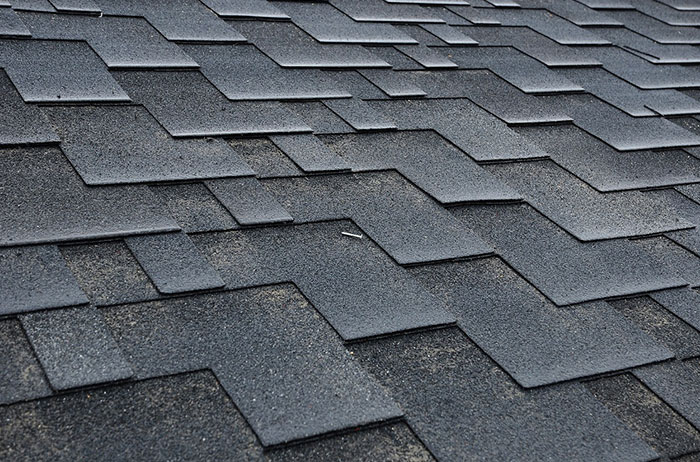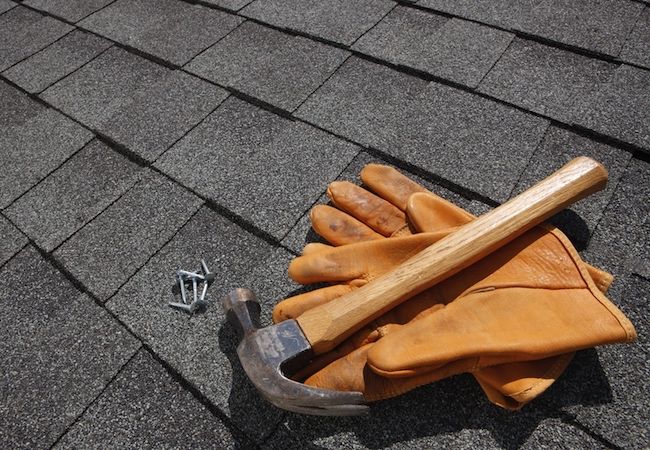A structurally sound roof is a safe, ‘uplifting’ roof. Homeowners should always keep in mind that routine roof maintenance is important for the longevity of their roof. Most homeowners know that the cost of replacing a roof is staggering. With annual roof inspections and routine repairs a roof lasts much longer, which can save you thousands of dollars down the line.
- Since metal roofs are typically smooth, most organic matter slides off into the gutters. For that reason, gutters on flatter metal roofs must be routinely cleaned because they will fill quickly.
- Inspect for rust and degradation. Corrosion on metal can be removed with a wire brush. Prime and paint affected areas to extend the life of the metal.
- Further, check for unsightly rust spots on flashing.
- Remove metal chips and shavings without delay as exposed steel oxidizes and results in unsightly rust stains.
- Promptly touch-up scratches on metal with matching paint.
- Tighten loose screws that secure the roof.
- Metal roofs can be washed with a well-soaked cloth, soft brush, sponge, or low-pressure sprayer and cleaning solution.
- Avoid too much walking on metal panels as they can dent.
Asphalt Shingles
- Examine for missing, damaged, and worn shingles frequently, but particularly after storms and replace as required.
- Also inspect sealant. If cracked, remove the old and replace with fresh adhesive.
- Clean moss and lichen growth to prevent rot. Do not use a power washer as it can damage asphalt shingles.
- When organic matter catches on the asphalt granules, it can accumulate in roof valleys. Clear often with a roof rake.
Cedar Shingles & Cedar Shakes
- Replace cracked, split, and missing shingles routinely.
- Safely remove moss before it turns into a harmful mold and mildew problem.
- Remove accumulated leaves and other tree debris promptly. Left too long, it retains moisture that leads to rot.
- Additionally, prolonged exposure to wet weather can rot cedar shakes and lead to leaks. They can be washed by a professional to avoid damaging the shingles.
- Cedar shingles may be further protected from rot with a periodic treatment of preservative.
Clay Tile
- Clay tiles are slippery to work with when wet. If you don’t have the proper safety equipment, this type of roof should be left to a roofing expert. Inspect annually for cracks or fissures safely from the ground using binoculars. Replace broken or missing tiles right away.
- Clay tile also tends to attract algae that eventually cracks the tile. A sealant can hinder the accumulation of algae, mold, and dirt.
- Clay tiles can be cleaned with a low-pressure power washer and a chlorine solution. Be sure to keep clear of debris and leaves also.
- Don’t worry about streaks on tile when replacing. Streaks wash away in the rain over time; attempting to wash streaks may crack the clay.
Slate
- Slate roofs are fragile to walk on and should be assessed by a professional roof contractor.
- Wear soft soled footwear if you do venture up on the roof. Slate can be cleaned with a soft-bristled brush; avoid using a pressure washer as it can damage the slate.
- Also keep slate free of heavy snow and debris to safeguard stability.
Torch-on
- Inspect for cracks, clogged drain holes, membrane separations, and excessive pooling of water. Repair often.
- Blistering from heat or splitting from freezing and heating leave a torch-on roof vulnerable to moisture penetration. Mold can also form. Remove leaves and debris to prevent mold and rot.
- Flat roofs and their drainage systems are more easily clogged with debris. Avoid leaks by routinely clearing out gutters.
It doesn’t matter if the roof is decades old or brand new—any type of roof requires routine maintenance to protect the home from the elements. All styles of roofing should be inspected once or twice per year for damage. Gutters and downspouts also must be cleared for safety and optimal drainage.
You can prevent costly roof replacements in your home by conducting regular maintenance and upkeep. Catching roof problems before they get worse can save you thousands of dollars down the line. The experts at Shoreline Roofing can pinpoint any issues you may be experiencing with your roof and work with you to address them in a way that fits your budget and your schedule. Contact us today at (250) 413-7967. to find out more about how our services and how we can help you.



